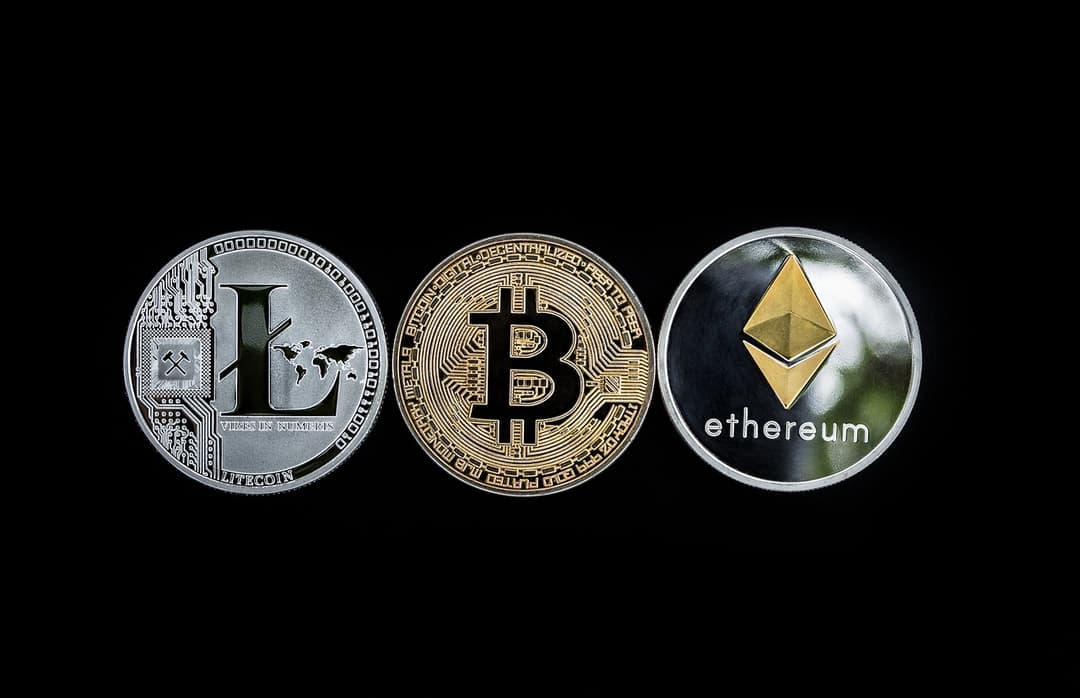
Table of Contents
The Rise of Decentralized Finance (DeFi)
Decentralized Finance, or DeFi, is a burgeoning movement within the blockchain space that aims to disrupt traditional financial institutions by building open-source, transparent, and accessible financial services on top of decentralized networks. DeFi applications leverage the power of smart contracts and cryptocurrencies to offer a wide range of financial services, including:
- Lending and Borrowing: Platforms like Aave, Compound, and MakerDAO allow users to lend and borrow cryptocurrencies without intermediaries, earning interest on their assets or accessing funds for various purposes. Learn more about DeFi lending and borrowing on https://www.investopedia.com/terms/d/decentralized-finance-defi.asp.
- Trading and Exchange: Decentralized exchanges (DEXs) like Uniswap and SushiSwap offer peer-to-peer trading of cryptocurrencies without the need for centralized order books, providing greater privacy and control over funds. Explore the world of DeFi trading on https://www.coindesk.com/markets/defi.
- Stablecoins: Stablecoins, pegged to fiat currencies like the US dollar, provide price stability within the volatile crypto ecosystem, enabling more reliable financial transactions. Discover more about stablecoins and their role in DeFi on https://www.investopedia.com/terms/s/stablecoin.asp.
- Insurance: DeFi insurance protocols like Nexus Mutual provide coverage against smart contract vulnerabilities and other risks, offering decentralized alternatives to traditional insurance companies. Learn about the innovations of DeFi insurance on https://www.coindesk.com/markets/defi/insurance.
The rise of DeFi has been fueled by several factors, including:
- Open-Source and Permissionless Nature: DeFi protocols are built on open-source code, allowing anyone to participate and contribute to their development. This fosters innovation and transparency.
- Transparency and Auditability: All DeFi transactions are recorded on a public blockchain, ensuring complete transparency and auditability of all activities.
- Accessibility: DeFi services are often accessible to anyone with an internet connection, breaking down barriers to traditional financial systems.
- Yield Opportunities: DeFi platforms offer attractive yield opportunities through lending, borrowing, and staking, attracting investors seeking higher returns.
While still in its early stages, DeFi is rapidly evolving and gaining traction as a transformative force in the financial landscape. It presents exciting opportunities for innovation and disruption, with the potential to democratize access to financial services and empower individuals with greater control over their finances.
The Need for Blockchain Interoperability
The burgeoning world of decentralized finance (DeFi) promises a future where financial services are accessible, transparent, and controlled by users. However, the current landscape is fragmented, with various blockchains operating in silos. This lack of interoperability poses a significant obstacle to the widespread adoption of DeFi.
Imagine a world where you could seamlessly transfer your Ethereum-based stablecoin to a Solana-based decentralized exchange (DEX) without needing to convert it to a native token. Or, imagine a future where you could use your Bitcoin to purchase goods and services on a blockchain-based marketplace. This is the promise of blockchain interoperability.
Here's why interoperability is crucial for the future of finance:
- Breaking Down Silos: Currently, different blockchains are like separate islands, unable to communicate with each other. This limits the potential of DeFi by hindering the flow of value and information between ecosystems.
- Expanding Reach: Interoperability allows users to access a wider range of services and assets across different blockchains, fostering innovation and adoption.
- Boosting Liquidity: Interoperability enables the free movement of assets between chains, increasing liquidity and reducing transaction costs.
- Facilitating Cross-Chain Collaboration: By allowing blockchains to communicate and share data, interoperability enables developers to build more complex and interconnected applications.
Several projects are working towards achieving blockchain interoperability, including:
- Polkadot: https://www.polkadot.network/ A heterogenous multi-chain protocol that enables interoperability between different blockchains.
- Cosmos: https://cosmos.network/ A network of independent blockchains that can communicate and exchange data.
- Ethereum 2.0: https://ethereum.org/en/developers/docs/consensus-mechanisms/pos/ The upcoming upgrade to Ethereum aims to improve scalability and interoperability.
These projects are paving the way for a future where blockchains seamlessly work together, unlocking the full potential of decentralized finance.
Key Technologies Driving Interoperability
The pursuit of interoperability in blockchain ecosystems relies on several key technologies that enable seamless communication and data exchange between different chains. These technologies are crucial for unlocking the full potential of decentralized finance (DeFi) and fostering a more interconnected Web3 landscape.
1. Cross-Chain Bridges: These bridges act as intermediaries, facilitating the transfer of assets and data between different blockchains. They operate by locking assets on the source chain and minting equivalent tokens on the destination chain, allowing for seamless cross-chain transactions.
- Examples: Multichain, Wormhole, Celer Network
2. Inter-Blockchain Communication (IBC): This protocol enables secure communication and asset transfers between different blockchains that are built on the Cosmos ecosystem. It relies on a standardized messaging system that facilitates interoperability between compatible chains.
- Examples: Cosmos Hub, Osmosis, Terra
3. Layer-2 Scaling Solutions: These solutions aim to enhance the scalability and efficiency of blockchains by offloading transactions to separate networks. They can be instrumental in fostering interoperability by providing faster and cheaper cross-chain communication.
4. Decentralized Oracles: Oracles serve as intermediaries between blockchains and the real world, providing external data to smart contracts. Interoperable oracles can fetch data from multiple sources and deliver it securely to different chains, enabling interchain applications.
- Examples: Chainlink, Band Protocol, Oraichain
5. Standards and Protocols: The development of open standards and protocols, such as the InterPlanetary File System (IPFS) and the Open Web Application (OWA) initiative, fosters interoperability by establishing common frameworks for data storage and application development.
6. Universal Identity Systems: Creating secure and interoperable identity systems across different blockchain networks is crucial for a seamless user experience. Systems like SelfKey and Civic aim to enable users to control their digital identity across various platforms.
The continuous development and adoption of these technologies are key to unlocking the true potential of blockchain interoperability, paving the way for a more interconnected, efficient, and inclusive decentralized future.
The Impact of Interoperability on DeFi
The decentralized finance (DeFi) landscape is brimming with innovative protocols and applications. However, a major hurdle in the space has been the lack of interoperability between different blockchains. Interoperability, the ability for different blockchain networks to communicate and exchange data, is a critical catalyst for DeFi growth. Here's how interoperability is revolutionizing DeFi:
- Enhanced Liquidity: Interoperability enables the seamless movement of assets between different blockchains. This allows for a more efficient allocation of capital, increasing liquidity and making it easier for users to access a wider range of financial products. Imagine a world where you can seamlessly transfer your Ethereum-based stablecoin to a Solana-based lending protocol to earn higher yields, all without needing to bridge assets manually. This increased liquidity can lead to more efficient markets and lower borrowing costs.
- Cross-Chain Composability: Interoperability allows for the creation of complex financial applications spanning multiple blockchains. This enables the development of innovative DeFi products and services that can leverage the strengths of different networks. For instance, users could combine a borrowing protocol on Ethereum with a lending protocol on Avalanche to create a novel financial product, allowing for more sophisticated strategies and solutions.
- Increased Adoption: Interoperability can make DeFi more accessible to a wider audience by removing the barriers of isolated blockchains. Users can access a broader range of services and products without being limited by the blockchain they initially chose. This, in turn, can lead to a significant increase in DeFi adoption, attracting new users and expanding the DeFi ecosystem.
Examples of Interoperability Solutions in DeFi:
- Multichain: A protocol that enables cross-chain communication and asset transfer between different blockchains, including Ethereum, Binance Smart Chain, and Polygon. https://multichain.org/
- Wormhole: A cross-chain bridge that allows for the transfer of tokens and data between Ethereum, Solana, Terra, and other networks. https://wormhole.com/
- Cosmos: A network of interconnected blockchains that uses the Inter-Blockchain Communication (IBC) protocol for communication and asset transfer. https://cosmos.network/
The Future of Interoperability in DeFi:
As interoperability solutions mature and become more widely adopted, DeFi will become increasingly interconnected and user-friendly. This will lead to a more robust and vibrant DeFi ecosystem, attracting more users and driving innovation in the space. The future of DeFi hinges on interoperability, paving the way for a truly decentralized and interconnected financial system.
Case Studies: Real-World Examples of Interoperability
The promise of blockchain interoperability is taking shape in various real-world applications. Let's explore some compelling case studies:
1. Cross-Chain DeFi:
PolkaDot: This blockchain platform allows for the seamless transfer of assets and data between different blockchains. This enables developers to build cross-chain decentralized finance (DeFi) applications, such as lending and borrowing protocols that can leverage liquidity from multiple chains. https://polkadot.network/
Cosmos: Similar to PolkaDot, Cosmos facilitates interoperability between blockchains through its inter-blockchain communication (IBC) protocol. This allows for the creation of a decentralized ecosystem where different chains can work together seamlessly. https://cosmos.network/
2. NFT Interoperability:
- Enjin Coin: Enjin Coin enables the creation and management of NFTs across various blockchains, facilitating interoperability for digital assets. This allows for seamless trading and integration of NFTs in different games and platforms. https://enjincoin.io/
3. Supply Chain Management:
- VeChain: VeChain leverages blockchain technology to track products and materials throughout the supply chain. By enabling interoperability with other blockchains, VeChain enhances transparency, security, and traceability in global supply chains. https://www.vechain.org/
4. Cross-Border Payments:
- Ripple: Ripple's blockchain network focuses on facilitating fast and cost-effective cross-border payments. By connecting different financial institutions, Ripple enables seamless transactions across geographical boundaries. https://ripple.com/
These are just a few examples showcasing the growing potential of blockchain interoperability. As the technology continues to evolve, we can expect to see even more innovative applications that revolutionize various industries.
Challenges and Opportunities in the Interoperable Future
The promise of blockchain interoperability is undeniably exciting, but it's not without its challenges. Building a truly interconnected decentralized ecosystem requires navigating a complex landscape of technical, regulatory, and social hurdles. Let's delve into some of the key challenges and opportunities that lie ahead.
Technical Challenges:
- Interoperability Standards: Developing robust and widely accepted standards for communication between different blockchains is crucial. Current efforts like IBC (Inter-Blockchain Communication Protocol) are making strides, but there's still much work to be done to ensure seamless interaction across a diverse range of platforms.
- Scalability: As more blockchains connect, the need for efficient and scalable interoperability solutions becomes paramount. Existing blockchains often struggle with scalability, making it challenging to handle a large volume of cross-chain transactions.
- Security: Connecting blockchains introduces new security vulnerabilities. Cross-chain attacks are a real threat, requiring robust security measures to safeguard user assets and prevent data breaches.
Regulatory Landscape:
- Regulatory Uncertainty: The regulatory landscape for blockchain technology is still evolving rapidly. Lack of clear guidelines and regulations can create uncertainty for developers and hinder innovation. The complex web of interoperability adds another layer of complexity, requiring coordinated efforts from global regulators.
- Compliance: Ensuring compliance with existing regulations and emerging standards across different jurisdictions is a significant challenge. Cross-chain transactions may involve different legal frameworks, raising questions about data privacy, security, and anti-money laundering protocols.
Opportunities:
- Enhanced Liquidity and Accessibility: Interoperability can unlock vast pools of liquidity and make DeFi services more accessible to a wider audience. Users can move their assets seamlessly across different platforms, maximizing returns and accessing a wider range of financial products.
- New Business Models: Interoperability opens the door to innovative business models that leverage the strengths of multiple blockchains. Decentralized exchanges, cross-chain lending platforms, and interoperable payment networks are just a few examples of exciting possibilities.
- Increased Innovation: The potential for interoperability fosters a more collaborative and interconnected ecosystem, encouraging innovation and the development of new solutions. The ability to combine the unique capabilities of different blockchains can unlock unprecedented advancements in various sectors, from supply chain management to healthcare.
Navigating the Interoperable Future:
The path to a truly interoperable future is not without obstacles, but the potential benefits are immense. By addressing the challenges and embracing the opportunities, we can unlock the full potential of blockchain technology and create a more inclusive, transparent, and efficient financial ecosystem.
